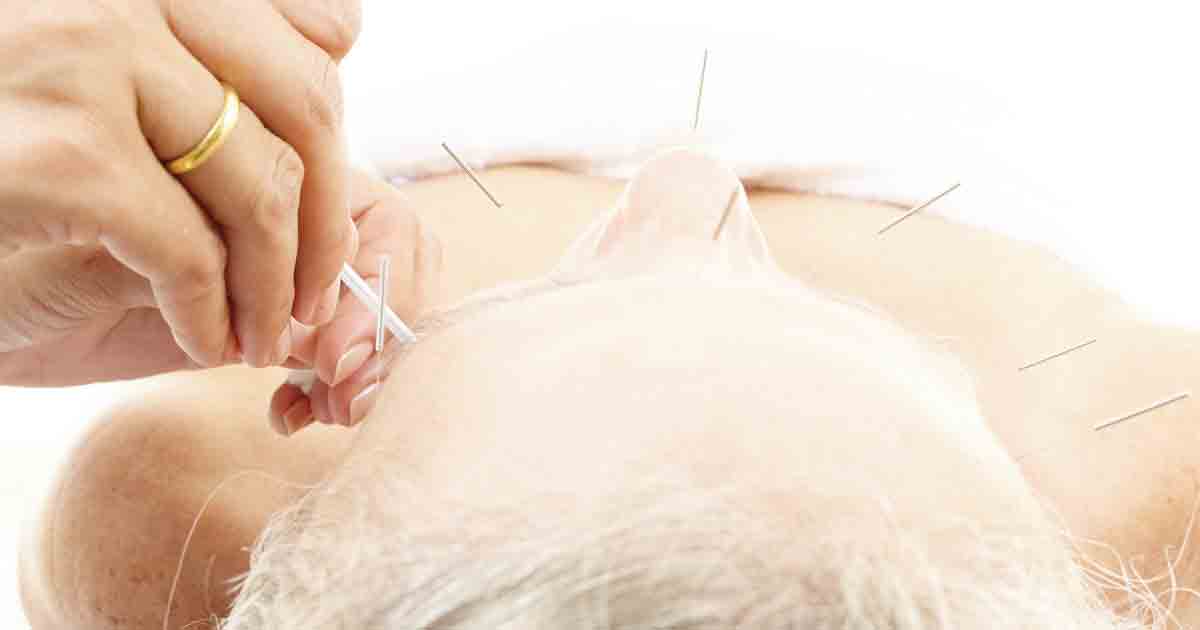This article contains affiliate links. As an Amazon Associate we earn from qualifying purchases.
By JIM MILLER
(SAVVY SENIOR) Many studies over the years—funded by the National Institutes of Health—have found acupuncture treatments to be very effective in easing pain and can help with a variety of other ailments, too.
Acupuncture Treatments
First used in China more than 2,000 years ago, acupuncture has become increasingly popular in the United States over the past decade.
While acupuncture isn’t a cure-all treatment, it is a safe, drug-free option for relieving many different types of pain, including low back pain, neck pain, osteoarthritis, migraine headaches, fibromyalgia, postoperative pain, tennis elbow, carpel tunnel syndrome, dental pain, and more. Studies have also shown that it can be helpful in treating asthma, depression, digestive disorders, menopause symptoms like hot flashes, and nausea caused by chemotherapy or anesthesia.
Exactly how or why acupuncture works isn’t fully understood, but it’s based on the traditional Eastern theory that vital energy flows through pathways in the body, and when any of these pathways get blocked, pain and illness result. Acupuncture unblocks the pathways to restore health.
However, today most Western practitioners believe that acupuncture works because it stimulates the nerves causing the release of endorphins, which are the body’s natural painkiller hormones. It’s also shown to increase blood circulation, decrease inflammation, and stimulate the immune system.
What to Expect
During acupuncture, practitioners stimulate specific points on the body by inserting thin needles through the skin. The needles are solid, sterile and disposable (used only once), and as thin as a cat’s whisker.
The number of needles used for each treatment can vary anywhere from a few up to a dozen or more. And where the needles are actually stuck depends on the condition being treated, but they are typically inserted about one-quarter to 1-inch deep and are left in place for about 20 minutes.
After placement, the needles are sometimes twirled or manipulated, or stimulated with electricity or heat.
You may feel a brief, sharp sensation when the needle is inserted, but generally it’s not painful. Once the needle is in place, however, you may feel a tingling sensation, numbness, mild pressure, or warmth.
How many treatments you’ll need will depend on the severity of your condition—12 weekly or bi-weekly treatments is very common. It’s also important to know that acupuncture can be used in conjunction with other conventional medical treatments, or by itself.
Cost and Coverage
Acupuncture treatments typically run anywhere from $40 to $150, depending on where you are in the country and what style of treatment you are receiving.
Today, an increasing number of private insurance plans, including some Medicare Advantage plans, and policies provided by employers offer some type of acupuncture coverage.
In January of 2020, the Centers for Medicare and Medicaid Services announced that original Medicare would cover up to 12 acupuncture sessions in 90 days for patients with chronic lower back pain. Eight additional sessions could be added if patients show improvement.
But in order to receive Medicare coverage, you must use a licensed acupuncturist who is supervised by a medical doctor, physician assistant, or nurse practitioner trained in acupuncture, who will need to process the acupuncture claim. Currently, licensed acupuncturists can’t directly bill Medicare.
To find an acupuncturist in your area, ask your doctor for a referral, or you can do a search online. Two good resources are the National Certification Commission for Acupuncture and Oriental Medicine (nccaom.org), and the American Academy of Medical Acupuncturists, which offers a directory of MDs and DOs who are certified to practice acupuncture. MSN
Send your senior questions to: Savvy Senior, P.O. Box 5443, Norman, OK 73070, or visit SavvySenior.org. Jim Miller is a contributor to the NBC Today show and author of the book, The Savvy Senior.








